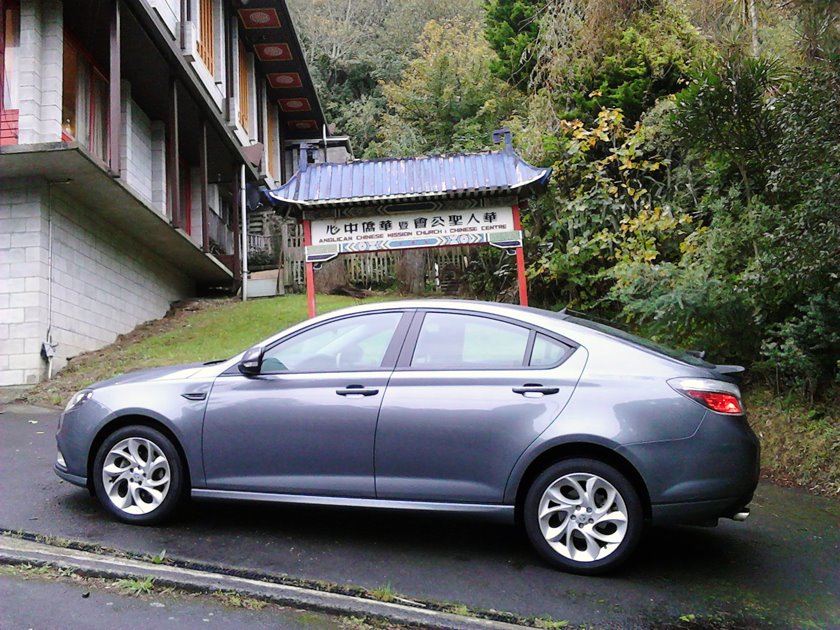
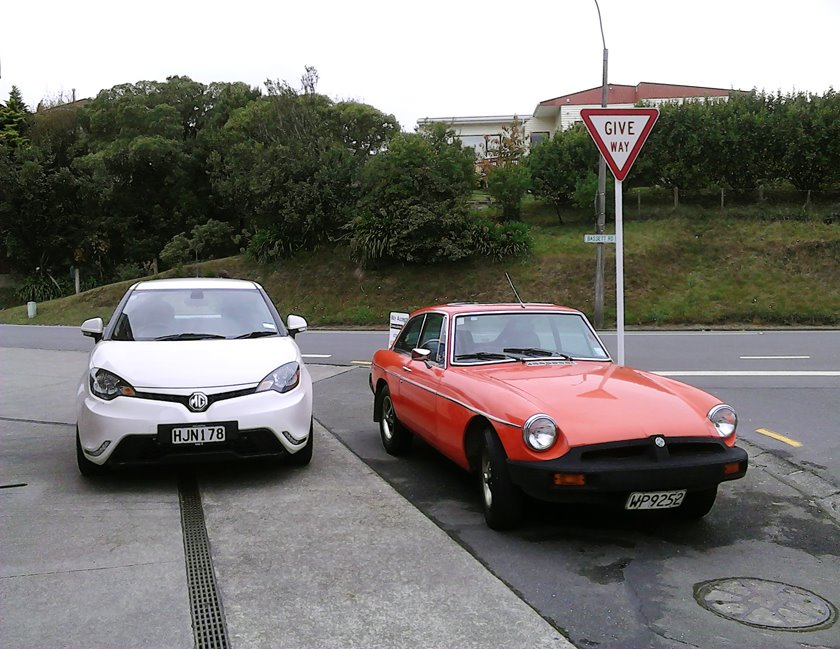
MG, 2010s-style Jack Yan has some reservations about the 6,
but the 3 is one of the most
compelling B-segment packages (visual pun intended) on the market
Jack Yan is publisher of Lucire.
Jack Yan has some concerns with the MG 6, the first Chinese-made car tested by this magazine, but has high praise for the follow-up, the small MG 3—which shows just how rapidly China is becoming a car-making force
photographed by the author
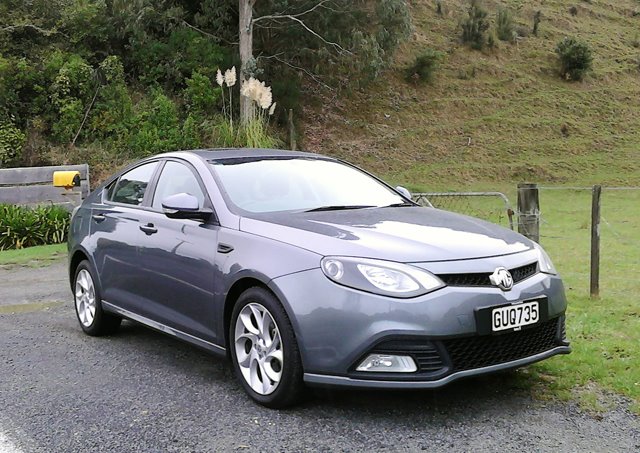
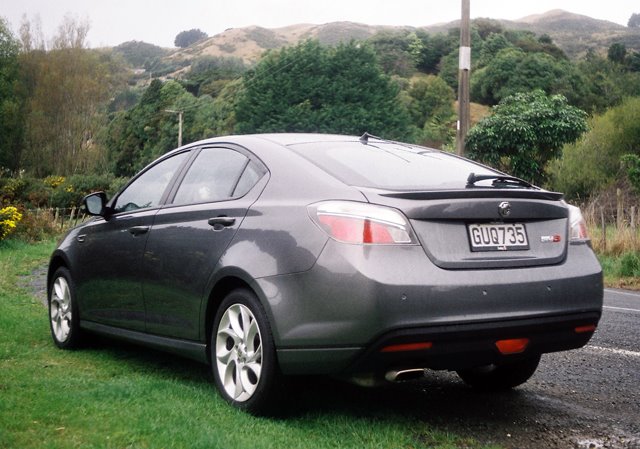
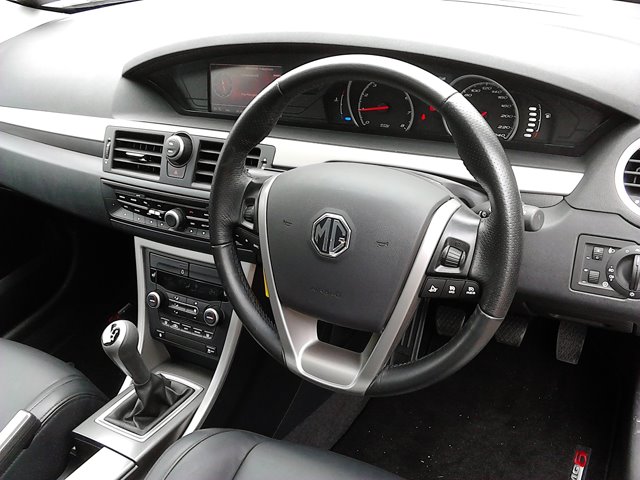
Testing the MG 6 brings a mixture of feelings. It’s the first Chinese-made car tested by this magazine, although it is not the first made-by-Chinese car sold in New Zealand (apart from Changcheng utes and various Cherys, there was also the Taiwanese-built Ford Escape in the 2000s), and that brings an odd mix of pride and trepidation.
Pride because MG had been run into the ground by its various masters, starved of investment since British Leyland was formed in 1968. The British and the Germans (after a stint under BMW ownership in the 1990s) couldn’t make it work, yet here is Shanghai Automotive Industry Corp., one of China’s oldest car makers, pouring millions into new factories, R&D, and reviving the brand. When you consider that in the 1970s, Shanghai was making a model loosely based on a Mercedes-Benz 220 for Communist top brass, it’s an incredible achievement. And when one is from Hong Kong (albeit during the old colonial days and no sunsets on the Empah), then there’s that ethnic association: the feeling that the folks in the old country have done right, succeeding where much more experienced car makers have failed.
But this comes with some concerns over “made in China”. While there are no issues with cars made on the island side of the Taiwan Strait, such as the Escape, and no one seems to be too worried about paying a premium for Apple computers, which are all made on the mainland, occidental buyers are worried that Chinese cars might suffer from the same foibles as the early Japanese and Korean ones. It took years for Toyota and Hyundai to come good, and is China in the same place? After all, for every quality, Chinese-made Honda Fit, there is a Chery QQ3 or BYD F0, built to a price and showing it.
And for those of us who grew up in the days of British cars ruling the roads in the Commonwealth, there are misty-eyed views of what MG was, even if those views are usually clouded by the donning of rose-coloured glasses. We remember the TF or the B GT V8, but we conveniently forget volume sellers like the 1300, based around the Morris 1100, the Farina-designed Magnette saloon, or for that matter, the New Zealand-only MG 2·0 Wagon, based around the Austin Montego.
So let us dispense with that argument: the 6 is not a sports car in the mould of the B, but then, a lot of MGs weren’t. SAIC is right to go after a volume market first, and build on what it knows. It has partnered with GM and Volkswagen since the 1980s, building more VW Santanas than even the Germans could muster—and plenty of them still ply their trade as taxis all over China. The Audis it builds under licence pass the German brand’s quality evaluations. SAIC’s GM products are seen as luxury products, more reliable than the norm when it comes to “made in China”, with buyers more than happy to pay a premium for the Buick badge.
When SAIC bought the IP for various Rover models, it set about redeveloping them, bringing them up to speed for the late 2000s. And when the Chinese government encouraged it to take on Nanjing Automobile Corp., China’s oldest car maker which had acquired the MG brand and the old Rover production lines—while ensuring the acquisition did not repeat the mistakes of British Leyland—it extended the development to a new line of MGs.
These are still British cars in many ways. Ricardo 2010 did the development, with British know-how. The New Zealand models have the same suspension settings as the British ones, which means they are tuned by British engineers for a more sporting ride.
They are, however, completely made in China, with no final assembly in Longbridge in Birmingham as with the UK-market ones—which actually means excellent quality, top-notch paintwork, and none of the glitches those of us old enough will associate with “made in England”. If you’re expecting to see an oil leak in your car port, this isn’t the motor for you.
While Britain has come good as a car-making nation, it has done so under foreign ownership to a large degree. I still see my regular mechanic who has horror stories of Rover and even Rolls-Royce product from the 1990s, when, in New Zealand, snobbery sold these brands. Rovers were flogged with Ian Richardson as Francis Urquhart, talking down about Johnny Foreigner and how British craftsmanship is better, and ‘You might very well think that; I couldn’t possibly comment.’ It wasn’t better, certainly not in a country where the Toyota Corolla has become the standard car, where Japanese reliability had long become the norm.
So the greatest fear of buyers—and perhaps the reason MG has priced even the flashest 6 at under NZ$30,000—is unfounded. There are no quality issues, as far as we could see. Price-wise, the 6 looks very tempting, more than the Focus and Mégane, which are thousands more. Yet it potentially could suffer from steep depreciation because of the unknown factor, just as Hyundai did in its first few years.
The 6 TSE that we drove had all the mod-cons: sunroof and reversing camera among them. All 6s have a similar appealing shape: it’s not edgy and modern like the Focus, but it is inoffensive, and it actually is sporting. That C-pillar rake is sleeker than that of the MG B GT. The only issue with the 6 is that it was adapted from SAIC’s Roewe 550, a car whose development work started nearly a decade ago. It may be relatively new to our shores, but it’s not the latest shape out there. With the pace of car design these days, tastes can be split, and this may explain why many of the 6’s initial buyers were older, those who had fond memories of the MG brand.
If it’s not a fashion item, what is it?
continued below
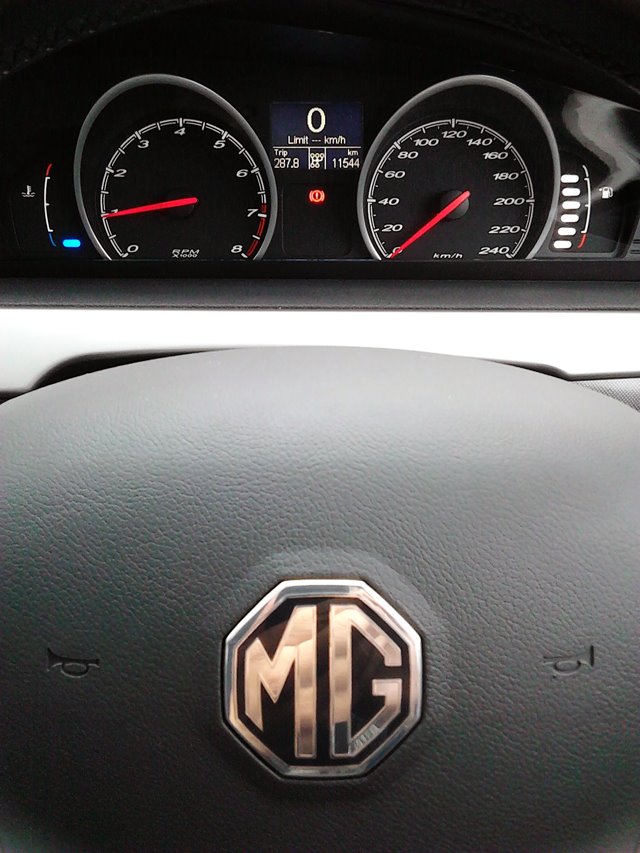
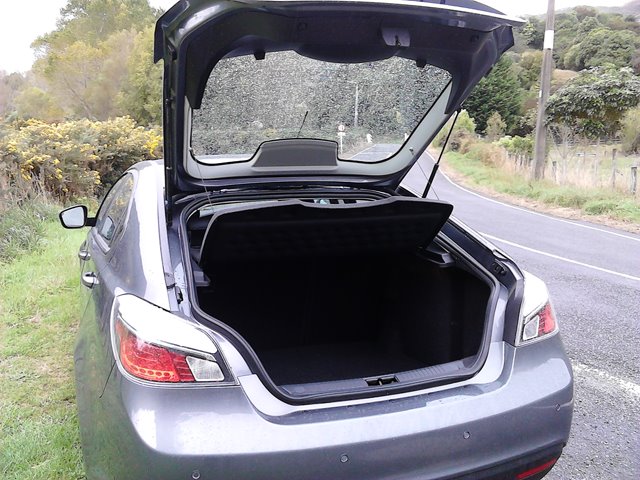
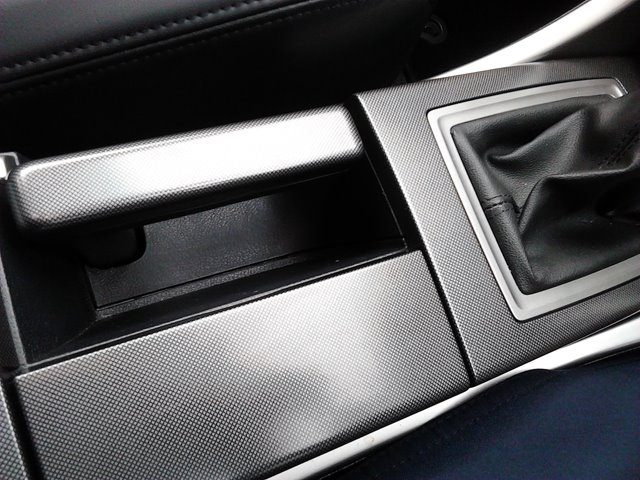
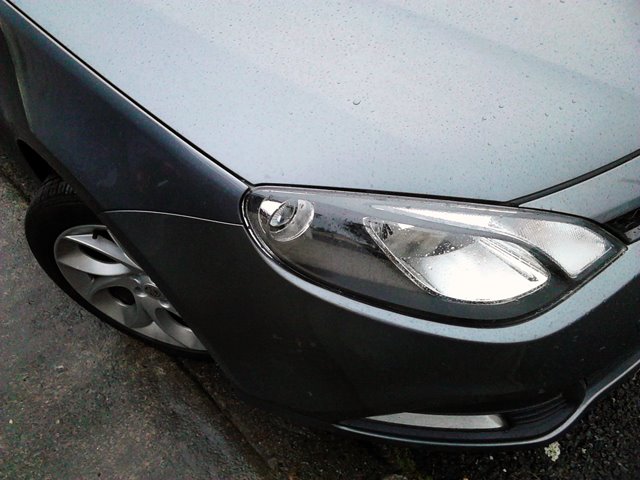
Above The 6 is a practical proposition, but the detailing—from the interior switchgear to the fake carbon-fibre effect—lets it down. But at NZ$24,990 at entry level, these are tiny niggles
Overseas media have talked about the 6’s size, that it is larger than a Focus but smaller than a Mondeo, but with the growth of the Focus and Golf class, this hardly seems to be an issue. You may even call MG prescient in upsizing the 6, knowing that it would take a few years to make it to various export markets. So it is a practical proposition: while it doesn’t have the space utilization of its forebears, the 1100 and 1300 of the 1960s (which, incidentally, are direct ancestors), it is roomy.
However, there are other things that annoy on the inside. The feeling that things are a few years behind extend within, even on the top model. The steering wheel is uncomfortable to hold, the materials used feeling cheap. This same criticism extends to the switchgear and dials: in an attempt to make things look sporty, the designers have adopted a wide, italic typeface. Unfortunately, it’s not naturally a wide, italic typeface: it’s Arial, the default, stretched and slanted accordingly. It’s page one in the graphic designer’s handbook as a no-no. Here the 6 lives up to the stereotype of “made in China”: the fake Giorgio Armani watches where the logo is set in a modified Times Roman, the fake Iphones which display, again, in Arial. Typographic tastes aside, it actually proves difficult to read.
The centre console has a clear, crisp display, and since I’ve harped on about typography enough, I’ll refrain. However, it’s not the easiest to use, and finding numbers to dial after Bluetooth-connecting your phone is a chore. You need the manual to acclimatize yourself to it, which is not something you can say about similar systems on Fords or the premium German brands.
The fake carbon-fibre effect looks just that: fake. It doesn’t seem solidly applied inside, and you get the real feeling that, despite driving the flagship of the range, things have been built to a price. In fact, the key itself suffers from the same complaint: it is light, and while that should be welcome given how much things can be weighed down in our pockets these days, it is hard to find when you are rummaging through, because it could be mistaken for a USB stick. The notion of a USB-light key doesn’t inspire confidence.
The 6 is middling when it comes to refinement: it’s not the quietest, with some road noise, and one can only forgive it based on the low price.
However, the 6 has an amazing trump card: it is a true driver’s car. The performance from the turbocharged 1·8-litre (118 kW) is quickly on tap, the grip is excellent, and its responsiveness shines. It begs to take corners, and it’s poised while you take it around twisty B-roads. We rate it highly, and if it weren’t for the steering wheel being uncomfortable, we’d go so far as to say the driving experience is at the top of the mass-market C-segment. The chassis engineers have worked some magic here, going far beyond MGs of old. Forget the old Midgets and Montegos, I don’t recall MGs handling this well. When you factor in when this work was done—in the latter half of the previous decade—it’s even more impressive that the 6 remains competitive in the handling stakes in 2014. If you equate MG with sporting saloons, then the 6 fulfils that brief more than admirably, and it is deserving of the octagon badge.
But does this mean a thumbs-down, if it only really shines in the handling department? If all 6s were NZ$30,000, then maybe. But this is the flagship, and when you consider the 6 begins at NZ$24,990 plus on-road costs—nearly NZ$10,000 less than the mainstream C-segment hatchbacks—any complaints about detailing and Arial vanish like a politician’s conscience.
It’s that pricing that leads Lucire to conclude that MG may have got the formula right on this first, creditable effort. The 6 is a far more practical and less anachronistic a package than MGs of old, whose faults can be overlooked by some of its buyers who find handling and a sporting character the most important ingredients of all in a family hatch. Those who must have something individual, and not yet another Auris or Golf, should consider it: it depends whether one feels saving 10 grand is worth putting up with some of its niggles. Getting a base 6 at under NZ$25,000 new, with no founded fear of Chinese quality being sub-par, should put it higher up buyers’ lists.
I had wondered why Jeff Edwards, at Gazley, wanted me to sample the MG 3 Style, the top-spec model in the smaller MG range, as well.
I began driving it, and I immediately understood why.
Every single complaint I had with the 6 is resolved in MG’s new B-segment hatchback. SAIC listened to customers and, in true Asian style, fixed everything.
Here is a 2010s design that, for a start, looks more contemporary. Like BMC cars of the 1960s, including the Mini, it’s exceptionally roomy for its length. (MG’s original Chinese marketing campaign, tying the 3 to the MG 1300 and other BMC models, suddenly doesn’t look so cheeky. They really meant it.) The key feels like a key, and a quality item. And that feeling extends into the interior.
continued below
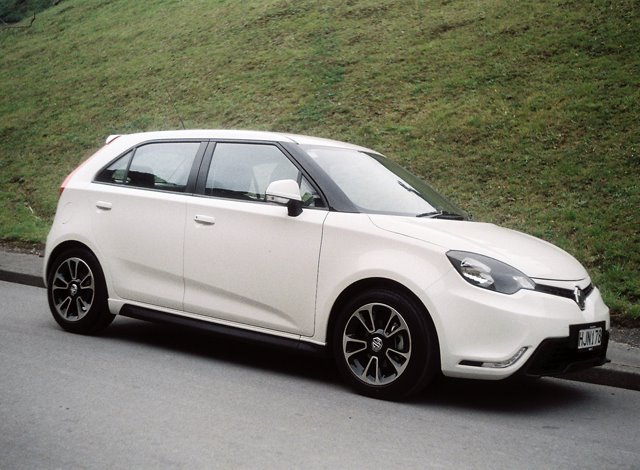
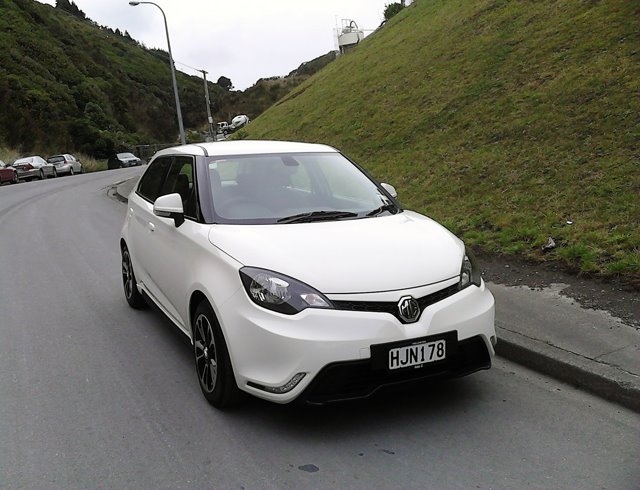
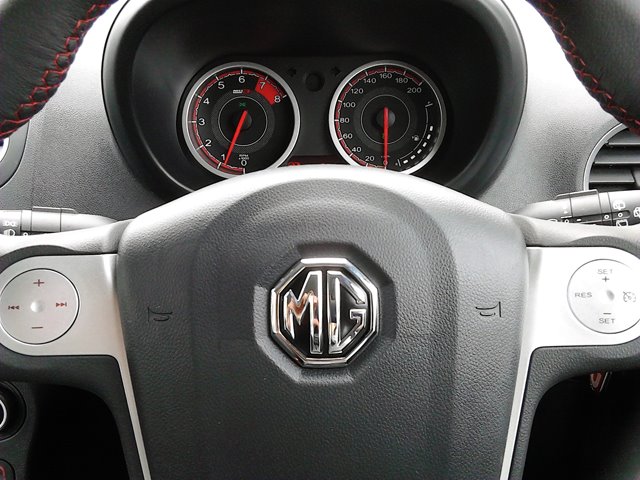
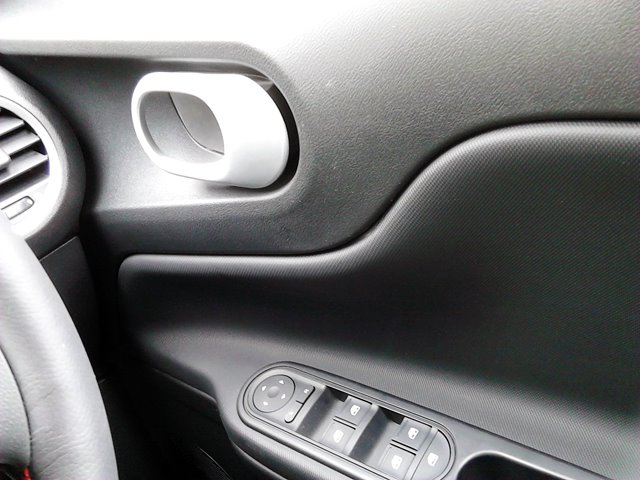
Above The MG 3 is a far more appealing package, and at the same price as a smaller, base Fiat 500 for the top model, it’s unbeatable.
There’s still some dodgy Arial but overall, MG has kept that to a minimum. The instrument binnacle looks purposeful. The fake carbon-fibre is gone in favour of much nicer-to-feel plastics. The steering wheel, the biggest bugbear of the 6 cabin, is beautiful to hold, and even to look at, with the proud MG octagon at its centre.
What the 3 really needs is more low-end torque. While the 1·5 is not unrefined, it needs to be worked if you need the pace. But it’s relatively quiet inside, making it a more pleasant place to be than the 6.
MG has kept the excellent build quality, and while the handling doesn’t sparkle the way it does in the 6, the 3 is still a decent drive—though we will need more than a brief test to give a full evaluation.
It’s also cheaper than the competition, with the top model at a shade under $20,000 (that’s the price of a smaller, base Fiat 500 Pop, with steel wheels, from Poland), and unlike the 6 there are virtually no compromises. The styling is more upright, which mightn’t be to everyone’s liking, but that seems to be the sole criticism that we can level at it after our drive.
Jeff tells us that a double-clutch gearbox is on its way, as well as more powerful engines, which will solve the concerns of the spirited driver. Where the 6 falls short, the 3 more than makes up for it, and it shows just how rapidly China learns—and even overtakes—the competition. No wonder the 3 is getting younger buyers in China and the UK: it’s a truly competitive British design and nothing to do with the tweed caps and oil leaks with which MGs of old were associated.
•
The MG 6 and 3 were kindly lent to us by Gazley Motors, 38 Kent Terrace, Wellington. For more information on the MGs in New Zealand, visit www.mgmotor.co.nz, or, in Wellington, call Jeff Edwards on 021 300-496.
Related articles hand-picked by our editors
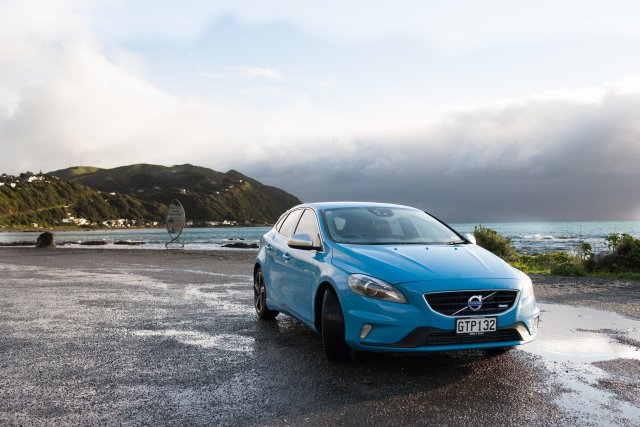
All senses engaged
Jack Yan tests the Volvo V40 T5 R Design, the Chinese-owned Swedish car maker’s latest effort, and finds it ably fulfils its sporting and design briefs
photographed by Matthew Beveridge
from issue 31 of Lucire
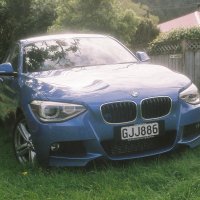 Multitasking
Multitasking
BMW reckons the 125i M Sport is its hot hatch. Jack Yan sees it differently
photographed by the author on a Voigtländer Bessamatic Deluxe
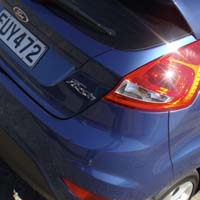 You just need to talk
like Keeley Hawes
You just need to talk
like Keeley Hawes
Jack Yan says the Ford Fiesta 1·6 Zetec gives you more between
the wheels, and that it’s one of the most complete small cars he’s ever
driven. However, the voice recognition isn’t as universal as Ford thinks
photographed by Tanya Sooksombatisatian
Advertisement
Copyright ©1997–2022 by JY&A Media, part of Jack Yan & Associates. All rights reserved. JY&A terms and conditions and privacy policy apply to viewing this site. All prices in US dollars except where indicated. Contact us here.